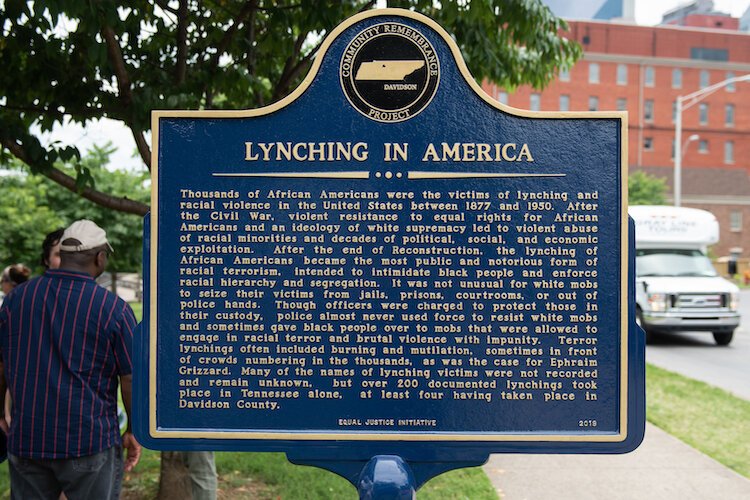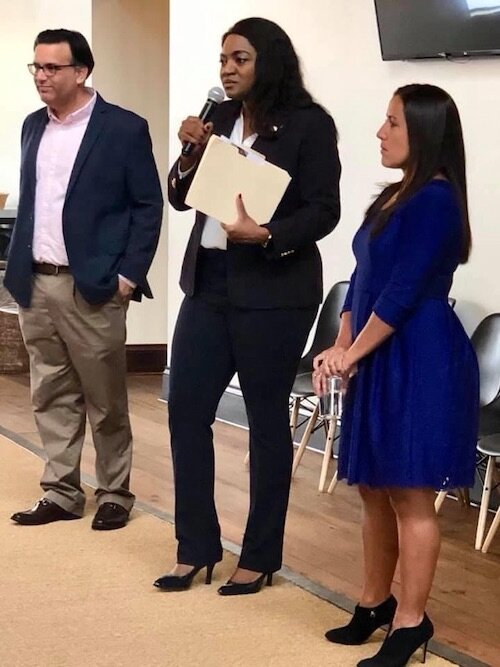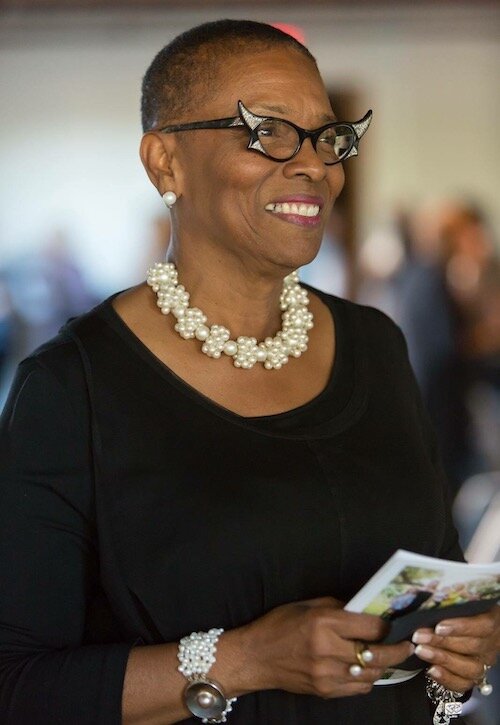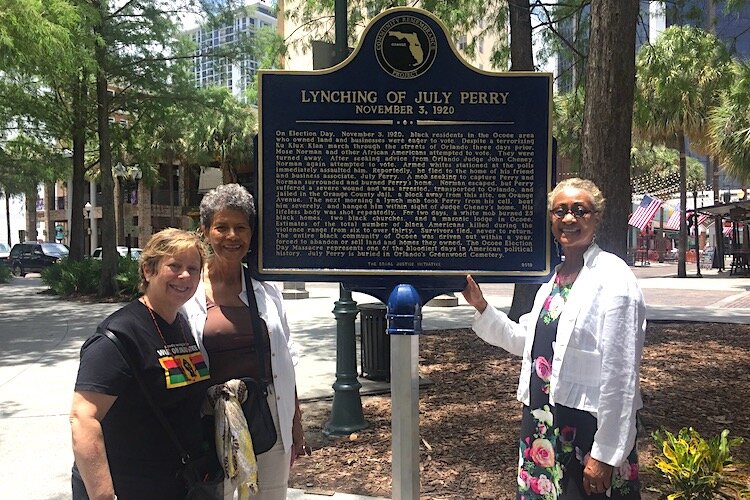Black Lives Matter: St. Pete, Tampa move forward on lynching memorials
Lynching of Black Americans remains a horrible legacy from the Jim Crow era. Grassroots organizations in Tampa and St. Petersburg are working with the nonprofit Equal Justice Initiative to create memorials to local victims of racial violence.
As Black Lives Matter protests continue in the Tampa Bay Area and nationwide, two local grassroots community coalitions are addressing a dark period in U.S. history when mobs of Whites attacked and lynched individual Blacks.
The majority of those lynchings occurred in the South, but not all. A new report by the Equal Justice Initiative confirms that at least 6,500 African Americans were lynched in the U.S. between 1865 and 1950. New York has one documented case. So does New Jersey. Pennsylvania has two. Florida has 361.
Tampa Bay wasn’t immune to this dark period in the country’s history. There are five documented cases of lynching in Tampa; three in St. Petersburg.
“We have never had an honest dialogue about this part of our history and now more than ever, we are realizing that we as Americans have not progressed very far on this issue,” says Tampa Councilman Luis Viera.
For the past year, Viera, State Rep. Fentrice Driskell, and Civil Rights Law Professor Tammy Briant Spratling have been spearheading a coalition of community leaders, historians, churches, and organizations who are discussing how best to proceed on a memorial that recognizes Tampa’s role in the history of lynching.
In St. Petersburg, Attorney Jacqueline Hubbard, President of the Association for the Study of African American Life and History, and Gwendolyn Reese, president of the African American Heritage Association of St. Petersburg, are co-chairing a similar group.
The St. Petersburg coalition also includes Julie Armstrong, USF St. Petersburg Professor of English and author of several books on the Civil Rights Movement, and Ray Arsenault, USF St. Petersburg Professor of History and an expert on civil rights history, as well as the Foundation for a Healthy St. Petersburg, several churches, the NAACP, and others.
Both St. Petersburg and Tampa coalitions are collaborating with the Equal Justice Initiative, a Montgomery, AL-based private, nonprofit organization dedicated to “changing the narrative about race in America.” In 2018, EJI established the Legacy Museum and National Memorial for Peace and Justice, the country’s first memorial dedicated to raising awareness of the country’s history of racial injustice, slavery, and segregation.
The Equal Justice Initiative also sponsors the Community Remembrance Project, which partners with community groups throughout the United States to recognize local victims of racial violence. The Community Soil Collection Project gathers soil from lynching sites and the Historical Marker Project erects memorials with a narrative that includes the victims’ names and dates of death.
About 20 markers have been placed in locations around the country. Last year, Orlando unveiled a memorial to Julius “July” Perry, a Black man who was lynched on election night in 1920 as a warning to the local African American community against voting. His lynching was part of the infamous Ocoee massacre in Florida history when at least 60 blacks and 2 whites died.
EJI has strict guidelines about the steps required for local coalitions to participate in the Community Remembrance Project.
Tampa received the word in early June that its proposal to be part of the project had been accepted — a milestone that Viera calls a “big step forward.”
“It means that we have met the requirements of EJI’s rigorous screening process and have been authorized to proceed under its guidance,” says Viera.
EJI provides funding for the design and manufacture of the memorials and works with community groups on each step of the process, from conducting research to helping create the narrative for the memorial. Community education and engagement, including sponsoring an essay contest for high school students, is also a key part of the process.
Plans for 2 markers in Tampa
Tampa will actually have two markers, says Viera. The first marker is one that the Justice Initiative has already commissioned. It’s in place at EJI’s National Memorial for Peace and Justice in Montgomery. That plaque will be given to the group to bring back to Tampa, Viera says. It lists the names of five documented local victims: Galloway, John Crooms, Lewis Jackson, Samuel Arline, and Robert Johnson.
The second will be larger and will feature a narrative description with one side highlighting the overall history of lynching. The other will recognize the local individuals who were victims of racial violence.
A memorial to lynching is important for many reasons, says Viera.
“We shouldn’t hide from injustice, we should know about it and seek to overcome it. This is a story that has to be told,” says Viera. “This isn’t about tearing our country down, it’s about knowing how we got to where we are today and how to make wrongs right.”
The Tampa coalition had been meeting for several months at Allen Temple A.M.E. Church to plan the memorial. But social distancing regulations due to COVID-19 forced members to begin meeting “virtually” by conference call.
The next call, scheduled for Wednesday, June 24, will include discussion of potential sites for placement of the historical markers. So far, the group has identified three possibilities: Tampa Riverwalk, Curtis Hixon Park, and an area not far from Lowry Park Zoo, the intersection of 50th Street and Hillsborough Avenue, where Robert Johnson was lynched in 1932.
To solicit additional input from the community, a public forum will be held on Monday, August 10, at 6:15 pm at the Robert W. Saunders Sr. Public Library, 1505 N. Nebraska Ave., Tampa.
“This is a bottom-up effort, not a top-down one, and it’s a very emotional journey for a lot of people,” says Viera. “We’re being sensitive and careful, asking people how do you envision this. How should we pay tribute to this issue of suffering here in our local area and in the country.”
Across the Bay in St. Pete
In St. Petersburg, the St. Petersburg Community Remembrance Project coalition has been meeting since last year at St. Augustine’s Episcopal Church.
Through newspaper clippings, personal diary entries, and other archival documents, the group is working with EJI to document cases of lynching in Pinellas County. So far, three individuals have been confirmed: John Evans, Parker Watson, and John Thomas. Their names will be engraved on a memorial that will be placed on land donated by the city at Second Avenue South and Martin Luther King Jr. Street North, site of the John Evans’ lynching in 1914.
“We’ve made a lot of progress in the last year and had been following the timeline that EJI sent us. Then COVID hit,” says Hubbard. “We’re hoping to still shoot for installation of the marker on November 12, the date that John Evans was lynched.”
In addition to planning an unveiling ceremony for the memorial, the group plans to create a permanent historical display at James Weldon Johnson Community Library.
“It’s very interesting that there would be nationwide protests going on right now, putting lynching once again front and center in people’s minds,” says Hubbard. “This project is so timely.”
Reese agrees. “You can’t address racial violence until you can understand that it’s been part of the fabric of the county since its inception,” she says. “History is not only about what happened back then, but it also helps us understand what is happening now.”
For more information:
- An interactive map put together by the Equal Justice Initiative
- EJI website
- EJI’s Community Remembrance Project
- Tampa EJI Project

















